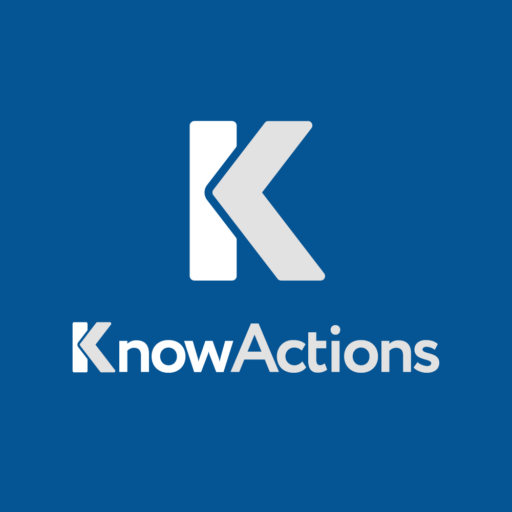Are you looking to improve your productivity, enhance your study skills, and achieve academic success? Effective note-taking methods can be your secret study hacks. Not only do they help you increase focus during lectures and study sessions, but they also improve memory retention and comprehension. Say goodbye to traditional, time-consuming approaches and discover the power of practical note-taking techniques.
Traditional note-taking methods might not work for everyone. Passive approaches like copying everything verbatim or relying solely on highlighting can be overwhelming and make it difficult to comprehend complex subjects. If you want to optimize your note-taking experience, it’s time to explore alternative methods that suit your learning style.
There are various note-taking techniques you can try. The Cornell method, Outline method, Mapping method, Charting method, and Sentence method are just a few examples. Each method has its unique advantages and can significantly improve efficiency and organization.
By implementing effective note-taking methods, you’ll be able to boost your productivity, improve your focus, and ultimately achieve academic success. Equip yourself with the right study tools and unleash your full potential through powerful note-taking strategies.
Key Takeaways:
- Effective note-taking methods can significantly improve productivity and learning outcomes.
- Traditional note-taking methods, such as copying verbatim or relying solely on highlighting, may not yield optimal results.
- Exploring different note-taking techniques, such as the Cornell method, Outline method, Mapping method, Charting method, and Sentence method, can enhance efficiency and organization.
- Note-taking helps increase focus, improve memory retention, and boost academic success.
- Utilize digital tools, like note-taking apps or cloud services, to enhance organization and accessibility.
Understanding the Importance of Effective Note-taking
Effective note-taking is not just about simply recording information. It involves actively engaging with the material, which in turn enhances understanding and retention. When you take notes, you create a roadmap that guides you through complex subjects, helping to organize your thoughts along the way. Additionally, note-taking plays a significant role in boosting productivity by helping you stay focused and identify key points.
Note-taking is an active process that requires you to synthesize information and make connections. By actively engaging with the material, you forge a deeper understanding of the subject matter. This hands-on approach allows you to create meaningful notes that are easier to comprehend and recall later on.
Active note-taking is like having a conversation with your materials. You are not just passively copying what you see or hear; you are actively interpreting and summarizing information in your own words. This process promotes better understanding and retention of the material.
Moreover, effective note-taking is a powerful tool for organizing your thoughts. As you write down key concepts, ideas, and examples, you create a tangible representation of the information. This organization provides structure and clarity to your notes, allowing you to navigate through the content more easily.
When you go back to review your notes, you’ll find that the active engagement and organization you utilized during the note-taking process make it easier to identify the most important information. This selective approach enables you to retrieve and retain the essential details, reducing the time you spend reviewing lengthy materials.
Note-taking is not just about recording information; it is a multi-faceted process that involves active engagement, understanding, and organization. By adopting effective note-taking techniques, you can boost your productivity, enhance your understanding and retention of information, and better organize your thoughts.
Achieving Active Engagement Through Note-taking
To achieve active engagement while taking notes, it is crucial to adopt strategies that work best for you. Here are a few tips:
- Stay attentive and focused during lectures or when reading.
- Use abbreviations, symbols, and diagrams to capture complex ideas quickly.
- Ask questions and seek clarification to deepen your understanding.
- Paraphrase and rephrase information in your own words.
- Make connections between different concepts to create a holistic understanding.
- Highlight key points and important details.
- Take breaks when needed to maintain focus and prevent information overload.
By actively engaging with the material and employing these strategies, you will not only improve your note-taking but also enhance your overall learning experience.
| Note-taking Methods | Description |
|---|---|
| Cornell Method | Divides notes into three sections: cues and main ideas, detailed notes, and a summary. This method helps in reviewing and recalling information efficiently. |
| Outline Method | Uses headings and subheadings to create an organized hierarchy of information. It provides a clear structure and aids in understanding complex topics. |
| Mapping Method | Visualizes connections and relationships between ideas using diagrams, mind maps, or flowcharts. This method enhances comprehension and encourages creative thinking. |
| Charting Method | Organizes information into tables or charts, allowing for easy comparison and identification of patterns or relationships. |
| Sentence Method | Emphasizes complete sentences rather than fragmented phrases. This method ensures the capture of key information and provides a comprehensive understanding of the material. |
Why Traditional Note-taking Methods May Not Work
When it comes to note-taking, relying on traditional methods may not always be the most effective approach. Methods like copying everything verbatim or solely relying on highlighting can prove to be overwhelming, time-consuming, and hinder comprehension of the material.
A passive approach is often adopted with these traditional methods where information is mindlessly transcribed without active processing. This can lead to difficulties in identifying key concepts and understanding the material later on.
“Copying everything verbatim or relying solely on highlighting may seem like an efficient method, but it can actually impede your ability to comprehend and explain the material.”
Instead of embracing a passive approach, it’s important to engage actively with the content. By using techniques that promote active thinking and organization, you can overcome the limitations of traditional note-taking methods.
One key aspect of effective note-taking is to prioritize important information and capture it in a way that is easily understandable. Traditional methods often fail to provide a structured framework for organizing ideas and concepts, making it difficult to retain and recall information.
Adopting alternative note-taking techniques that encourage active engagement can be a game-changer. These methods not only save time but also enhance comprehension and retention.

Benefits of Active Note-Taking
Active note-taking methods offer several advantages over traditional approaches:
- Enhances comprehension: By actively processing and summarizing information, you gain a deeper understanding of the material.
- Improves memory retention: Engaging with the content on a deeper level increases the chances of retaining information for longer periods of time.
- Facilitates organization: Actively thinking about the material helps in structuring and organizing ideas, making it easier to review and revise later on.
- Boosts critical thinking: Active note-taking encourages analytical thinking and the ability to connect ideas, fostering a deeper level of understanding.
- Increase motivation: Being actively involved in the note-taking process can improve focus and motivation, leading to better learning outcomes.
It’s clear that traditional note-taking methods may not provide the optimal results you seek. By adopting more active approaches, you can overcome the limitations of traditional methods and improve your overall note-taking experience.
| Note-Taking Method | Description |
|---|---|
| Cornell Method | A note-taking technique that divides the page into sections, allowing for concise note-taking, key summaries, and review cues. |
| Outline Method | A hierarchical approach that uses headings and subheadings to structure notes, promoting clarity and organization. |
| Mapping Method | A visual representation of the relationship between ideas using diagrams, flowcharts, or mind maps. |
| Charting Method | Categorizes information into tables or charts, facilitating comparison and understanding of data. |
| Sentence Method | Writing detailed notes using complete sentences to capture key information and context. |
Exploring Different Note-taking Techniques
Note-taking is a crucial skill that can significantly improve your efficiency and organization. By utilizing different note-taking techniques, you can enhance your learning experience and maximize your productivity. Let’s explore some effective methods that can revolutionize your note-taking process.
Cornell Method
The Cornell method is a popular technique that involves dividing your notes into three sections for better organization and comprehension. The first section is for cues and main ideas, which helps with active recall. The second section is for detailed notes, where you jot down the key points and examples. The final section is for summarizing the main ideas, allowing you to review and revise effectively.
Outline Method
The Outline method is a hierarchical approach that uses headings and subheadings to structure your notes. This method is particularly useful for subjects that have a clear structure or when you need to emphasize key ideas and supporting details. By creating a logical and organized outline, you can easily review and retrieve information.
Mapping Method
The Mapping method is a visual technique that helps you to visually represent complex relationships between ideas and concepts. It involves creating a diagram or mind map that connects key concepts, subtopics, and supporting details. This method encourages a holistic understanding of the subject and facilitates better recall and comprehension.
Charting Method
The Charting method involves using tables or charts to categorize and compare information. This method works well when you need to analyze data, make comparisons, or summarize key points. By visually organizing your notes into a chart or table, you can quickly identify patterns and relationships.
Sentence Method
The Sentence method is a straightforward approach where you write complete sentences to capture key information. This method is useful when you need to record detailed explanations, examples, or quotes. By summarizing the content in full sentences, you can easily review and understand the information later.
These note-taking techniques offer various options to cater to your individual learning style and preferences. Experiment with different methods to find the one that suits you best. Remember, effective note-taking is essential for enhancing your learning experience and boosting your productivity.
Conclusion
Effective note-taking methods are crucial for improving productivity, enhancing learning outcomes, and achieving academic success. By implementing these techniques, you can boost your focus, promote better memory retention, and unlock your full potential.
Understanding the importance of note-taking is the first step towards developing effective study skills. It goes beyond mere transcription and engages your mind in active processing of information. By staying actively engaged, you can ensure a deeper understanding and better organization of your thoughts.
Exploring different note-taking techniques allows you to find the approach that works best for you. Whether you prefer the Cornell method for comprehensive note-taking, the Outline method for hierarchical organization, the Mapping method for visual representation, the Charting method for easy comparison, or the Sentence method for capturing key information, each technique offers unique benefits.
Remember to utilize digital tools such as note-taking apps and cloud services that can enhance the organization and accessibility of your notes. Additionally, ensure regular review and revision of your notes to reinforce your understanding and improve long-term retention.
By implementing effective note-taking methods, you can elevate your productivity, enhance your learning experience, and achieve academic success. Take note of these strategies, apply them to your studying routine, and watch as your focus, memory retention, and overall academic performance soar.





